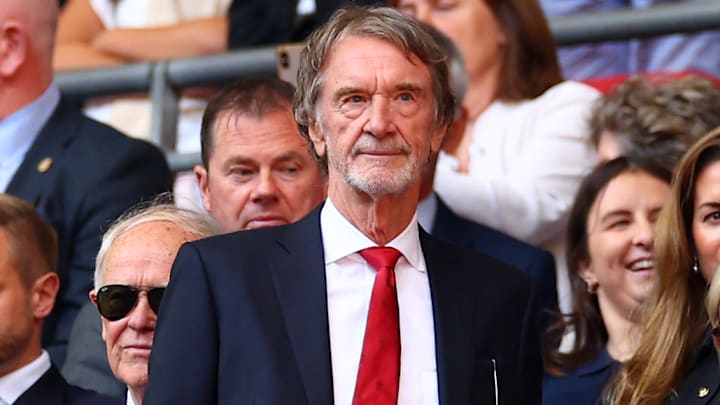In a football world obsessed with the next blockbuster signing, Sir Jim Ratcliffe has chosen a decidedly unconventional playbook: pouring millions into bricks, mortar, and a vision. The British billionaire and lifelong Manchester United supporter has upped his investment in the club by £79.43 million ($100 million), bringing his total stake to a hefty 28.94%. Not a penny of this latest cash injection, confirmed via filings with the New York Stock Exchange, is earmarked for player transfers. Instead, the money is aimed at reshaping the club's infrastructure—a bold move in a game where quick fixes often trump long-term thinking.
Beyond the Touchline: The Culture Shift Under Ratcliffe
Ratcliffe’s investment signals more than a financial commitment; it’s a philosophical one. This isn’t just about repairing the leaky roof at Carrington or debating whether Old Trafford needs a facelift. It’s about reimagining what Manchester United stands for in the modern game. Under Ratcliffe’s partial ownership, the club is being woven into the broader drapes of INEOS, his multinational conglomerate that also boasts elite cycling and sailing teams.
The vision? An interconnected sporting empire where innovation flows freely across disciplines—a lofty ambition for a football club known as much for its global fan base as for its storied past.
But with great ambition comes great turbulence. The past year has been anything but smooth. From structural shake-ups to headline-grabbing hirings and firings, Ratcliffe’s tenure has resembled a high-stakes chess game, each move loaded with risk and potential. The appointment of Ruben Amorim, a high-intensity tactician, as manager in November was a statement of intent, but it came with its own set of challenges, not least of which is getting the current squad to adapt to his demanding style.
Even Sir Alex Ferguson, the club’s living legend, hasn’t been spared in this whirlwind of change, as his ambassadorial role is set to conclude at the end of the season—a symbolic passing of the torch, or perhaps a troubling sign of detachment from tradition.

The Controversy of Cost-Cutting: Necessary Evil or Unforgivable Sin?
For all its lofty ideals, Ratcliffe’s project hasn’t endeared him to everyone. Cost-cutting measures—like slashing perks for staff, making 250 employees redundant, and ending concessions for children and pensioners—have sparked outrage among fans. Social media has become a battleground, with debates over whether Ratcliffe is the savior Manchester United needs or a businessman out of touch with the club’s soul.
Even as critics decry these measures, Ratcliffe remains steadfast, arguing that sacrifices are needed to redirect resources into the first team and long-term infrastructure. The transformation of Carrington into a state-of-the-art training facility is already underway, a project meant to rival the likes of Manchester City’s Etihad Campus. Meanwhile, discussions over Old Trafford’s future continue, with decisions on whether to renovate or rebuild expected by 2025.
Tactical Overhaul Meets Emotional Turmoil
The arrival of Amorim has brought a tactical shift towards high-energy football, a departure from the more pragmatic approaches of recent managers. Yet doubts remain: can a squad built for other systems adapt quickly enough to fulfill Amorim’s vision? Ratcliffe’s focus on infrastructure over squad reinforcements could hamstring the new manager in the January transfer window, leaving fans to wonder if this season will be yet another chapter of rebuilding without immediate results.
Ratcliffe’s approach to football ownership challenges the norm, much like Bayern Munich or Liverpool have done in prioritizing sustainable growth over flashy transfers. But Manchester United isn’t just another club; it’s a cultural institution. For a fan base accustomed to the grandeur of the Ferguson era, patience isn’t a virtue—it’s a test of faith. The tension between tradition and transformation is palpable, a dance between hope and apprehension that plays out in every chant, tweet, and match-day roar.
The Bigger Picture: INEOS’s Sporting Experiment
INEOS’s stewardship represents more than a managerial experiment; it’s a blueprint for a new kind of footballing enterprise. By aligning United with a portfolio that spans elite cycling and America’s Cup sailing, Ratcliffe is betting on cross-disciplinary innovation to elevate the club. Will this fusion of industrial might and sporting ambition redefine what success looks like in football? Or will it prove to be an overreach, a cautionary tale for future billionaires eyeing the beautiful game?
A Moment to Reflect—and a Future to Build
Manchester United now stands at a crossroads. Ratcliffe’s vision is grand, his commitment undeniable, but the road ahead is fraught with challenges. Fans are left grappling with a fundamental question: what does success look like in the Ratcliffe era? Is it silverware on the shelf, or a club rebuilt on solid, sustainable foundations?
As the Red Devils edge closer to mid-2025, when Old Trafford’s fate will be decided, one thing is clear: the club’s identity is being rewritten. Whether this new chapter becomes a renaissance or a footnote in football history depends on the delicate balance between ambition, tradition, and the unyielding pressure to deliver results. For now, all eyes remain on Manchester United—not just to see how they play, but to watch how they evolve in a world that demands nothing less than greatness.
